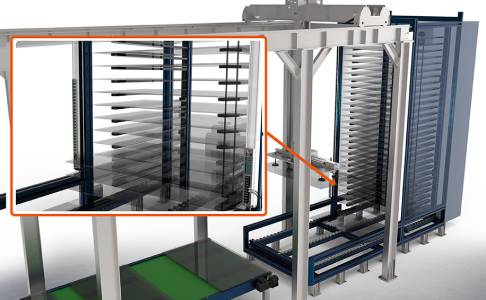Autonics Through-beam Mapping Sensor BWM Series
Through-beam Mapping Sensor
• Double Scan Method
• CC-Link, EtherCAT Communication
• Various Sensing Channels, Optic Axis Pitch
• Mutual Interference Prevention
• Bright Status Indicator

The Through-beam Mapping Sensor for Industrial automation
The Autonics BWM series mapping sensors are optimized for glass substrate detection with double scan method and excellent optical detection performance. The sensors can detect thin glass substrates with low levels of light reflection and support CC-Link and EtherCAT communication protocols. Users can easily check the teaching area using the installation instruction mode. The mapping sensors can be used to detect display panels on transport cassettes.
Main Features
- Stable glass substrate detection with using double scan method
- Sensing distance: glass G size +30%
- Customized models available: sensing channels (4 to 62 channels), optical axis pitch (25 to 200 mm)
- Communication output: CC-Link (ver 1.1, 2.0), EtherCAT
- Easy installation with installation instruction mode
- Mutual interference prevention, bent optical axis alarm, 9-stage sensing level setting, emitter error alarm
- Bright status indicators on slave units
Click the following link to see all Autonics Area Sensor series.
You can also view all Light Curtain products here. Check them out now.
Customized Models Available
Users can order customized models with different sensing channels and optical axis pitch depending on user requirements. Visit Autonics company to discover more about this manufacturer and its products.
Double Scan Method for Stable Glass Substrate Detection
The master and slave units contain both emitter and receivers which allow detection of light amount from both sides, offering high optical detection performance. This double scan method allows detection of thin glass substrates with low levels of light reflection.
Installation Instruction Mode and Auto Teaching Function
The installation instruction mode allows users to check if the detection target object is in proper position using the output indicators. The auto teaching function allows all sensing channels to be set in uniform light amount for optimal sensitivity setting.
Sensing Level Setting to Minimize Influence from Bent Glass or Scattered Reflections
The sensing level setting allows optimal sensing with minimal influence from bent glass or scattered reflections. The sensing level can be set in 9 different sensitivity levels for stable detection in various environment settings. If the mapping sensor or cassettes are bent, sensitivity adjustments can be made without removing the glass substrates.
CC-Link, EtherCAT Communication Protocol Support
The units offer support for CC-Link or EtherCAT communication support and also offer options for connector type connection or terminal type connection.
Mutual Interference Prevention Function
When 2 or more units need to be installed near each other, users can set different frequency for each unit to prevent malfunction from mutual interference.
Check Operation Status with Bright Indicators
The bright indicators allow users to easily check operation and communication status even from long distances.
Click the links below to read more about Light Curtain in our articles:
Special Offer
Free delivery in UAE areas and above 400$ outside UAE

